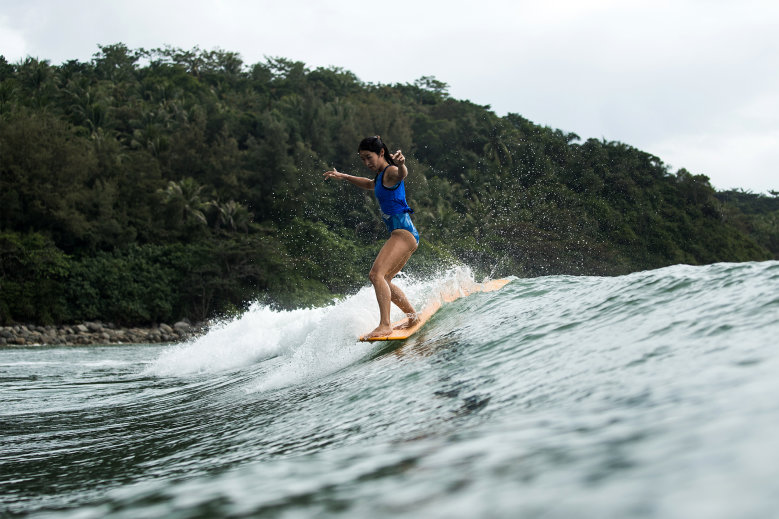

By doing this, you’ll get lots of practice learning to read the ocean and popping up with ease. There is no shame in starting on a ten-foot soft-top longboard that’s easy to paddle and stable to ride. I’ve seen so many beginners on brand-new, expensive shortboards that are really cool but lack the volume and length for the rider to catch enough waves to actually improve their skills.

When you first start, get yourself on a big board. What to Ride (Nicolás Pina Calvin/Tandem) Stay away from famous spots-they’re crowded, not welcoming to beginners, and usually not the best conditions for newbies. You can search online for the best beginner surf spots in your area or see where local surf schools run their lessons. The key is finding someplace that’s not too crowded, where you can catch lots of waves and master the art of paddling into waves and popping up. Keep your ego at bay, and don’t be afraid to go where kids are learning. When you’re just beginning, you don’t need perfectly peeling waves look for long rows of knee-high whitewater rolling toward the shore. Ideally, you’ll want to find a spot where waves break slowly over a semi-shallow (waist- to chest-deep) sandy bottom. Lastly, always hold on to your board.Īfter etiquette, the second most important element of an enjoyable surf experience is finding the right waves at the right spots. If someone is riding a wave coming toward you, paddle in the opposite direction of where the surfer is headed. This not only keeps you and others safe, but it also saves energy. If there is no other way out than through the whitewater, it’s your job to stay out of the way of a surfer riding a wave.

Never paddle out through the surf or through the lineup if there is another way. If there is a channel (a deeper area where the waves don’t break), paddle out there. Stay out of the way when paddling out.If you’re at a break with one takeoff spot, wait your turn, slowly moving toward it as others take their turn-it’s bad etiquette to paddle around them. You might hear someone yell “going left” or “going right” to indicate their direction, and that they have the right of way. If a wave is peeling in both directions, one surfer can ride the wave in each direction.

If the person is to your left, they have the right of way, so you need to stop paddling and wait until the next wave. Let’s say it’s going to break on the left side of you and peel toward your right. Imagine a wave is coming in and you and another surfer turn toward shore to catch it. The person who is closest to where the wave breaks (also known as “deeper”) has the right of way. Be polite, don’t yell (most lineups are surprisingly quiet), and try not to get in anyone’s way. As with any outdoor pursuit, the locals know the area best and feel a sense of ownership. Once you paddle out, sit off to the side and watch for a little longer, noting where people are catching waves. Are they all very advanced, or are there beginners as well? You need to make sure that the waves are a comfortable size for you-and sometimes it takes 30 minutes or more to see how big the bigger sets are. You’ll want to watch where other surfers paddle out, where the waves are breaking, and the ability level of the people in the water.


 0 kommentar(er)
0 kommentar(er)
